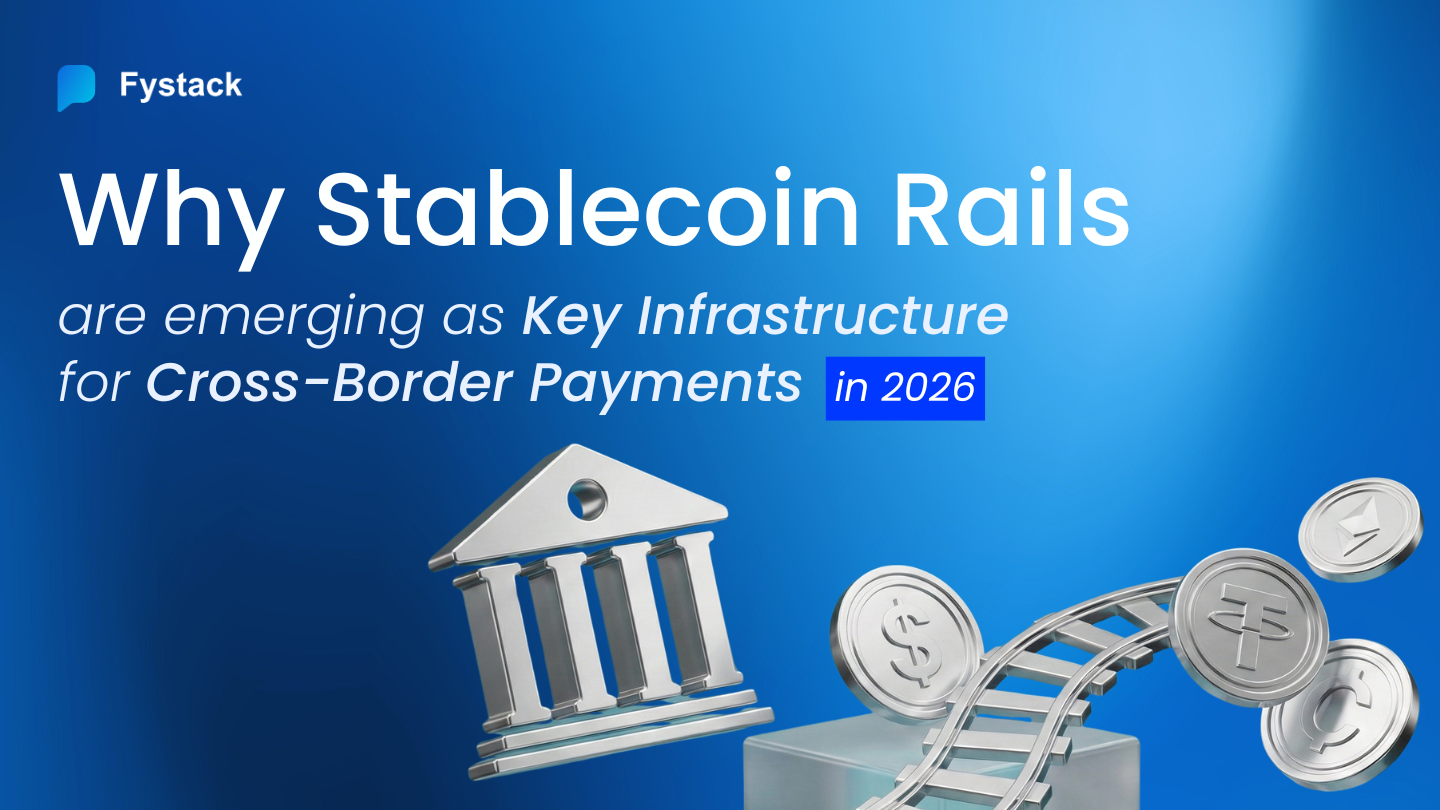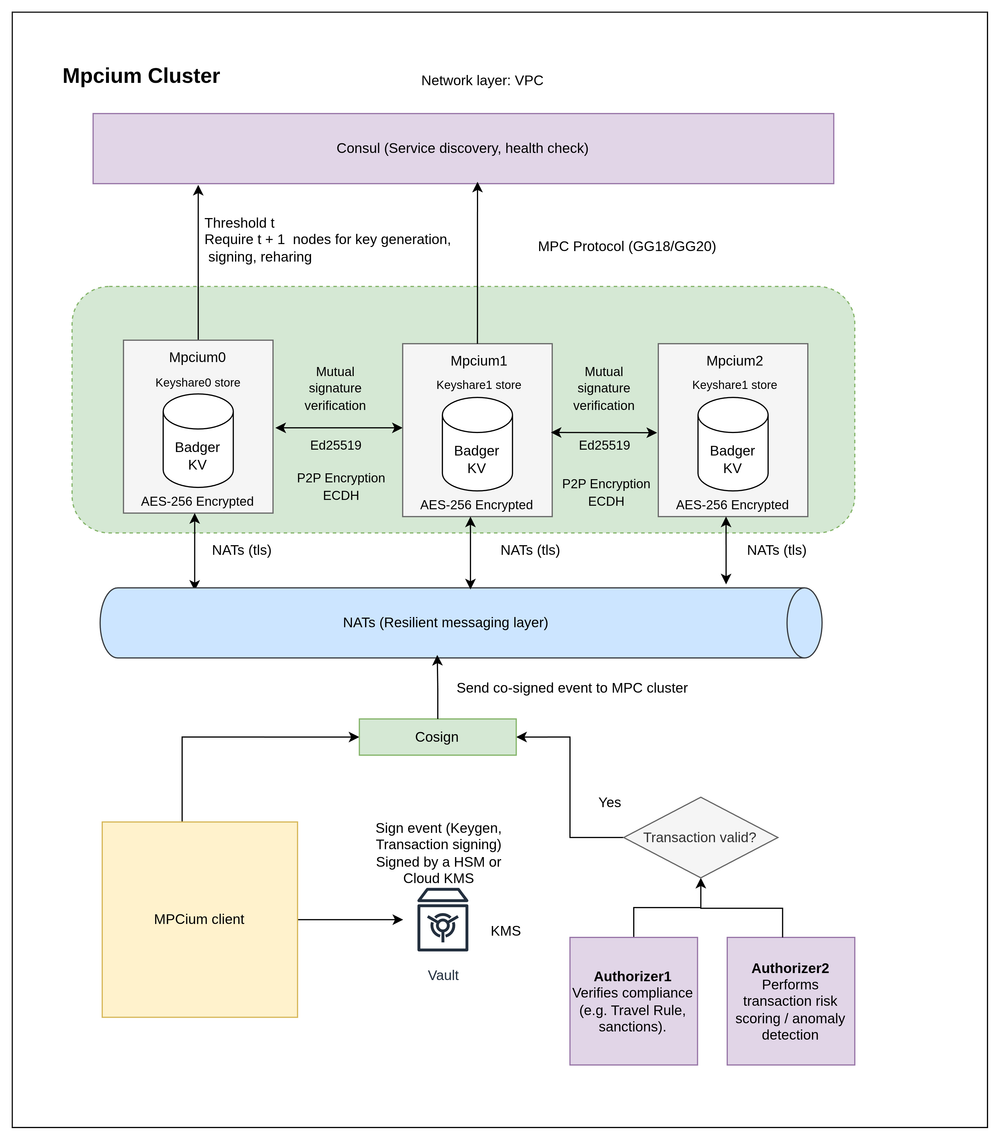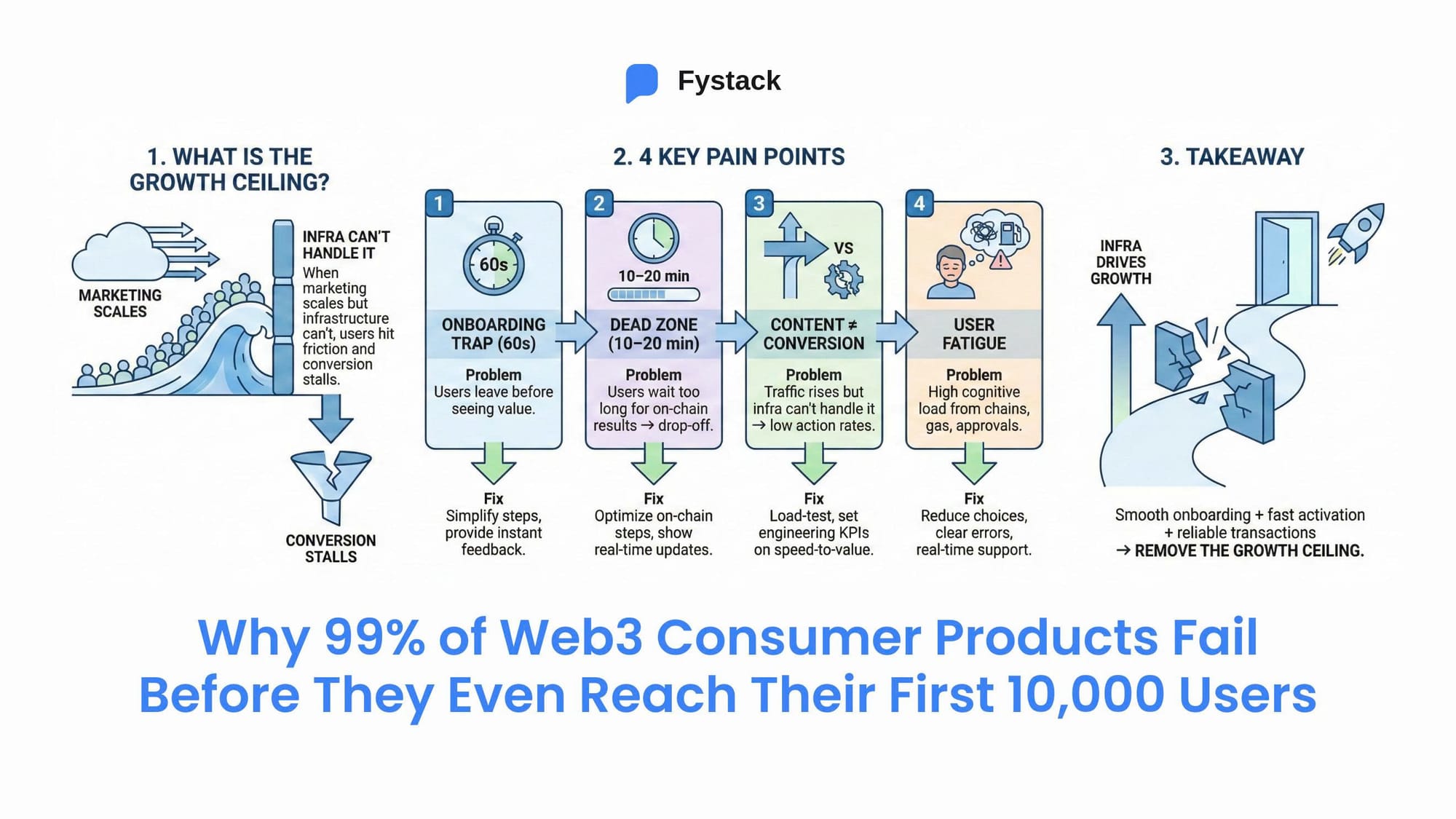2025 Top Non-Custodial Solutions for Stablecoin Businesses
Phoebe Duong
Author
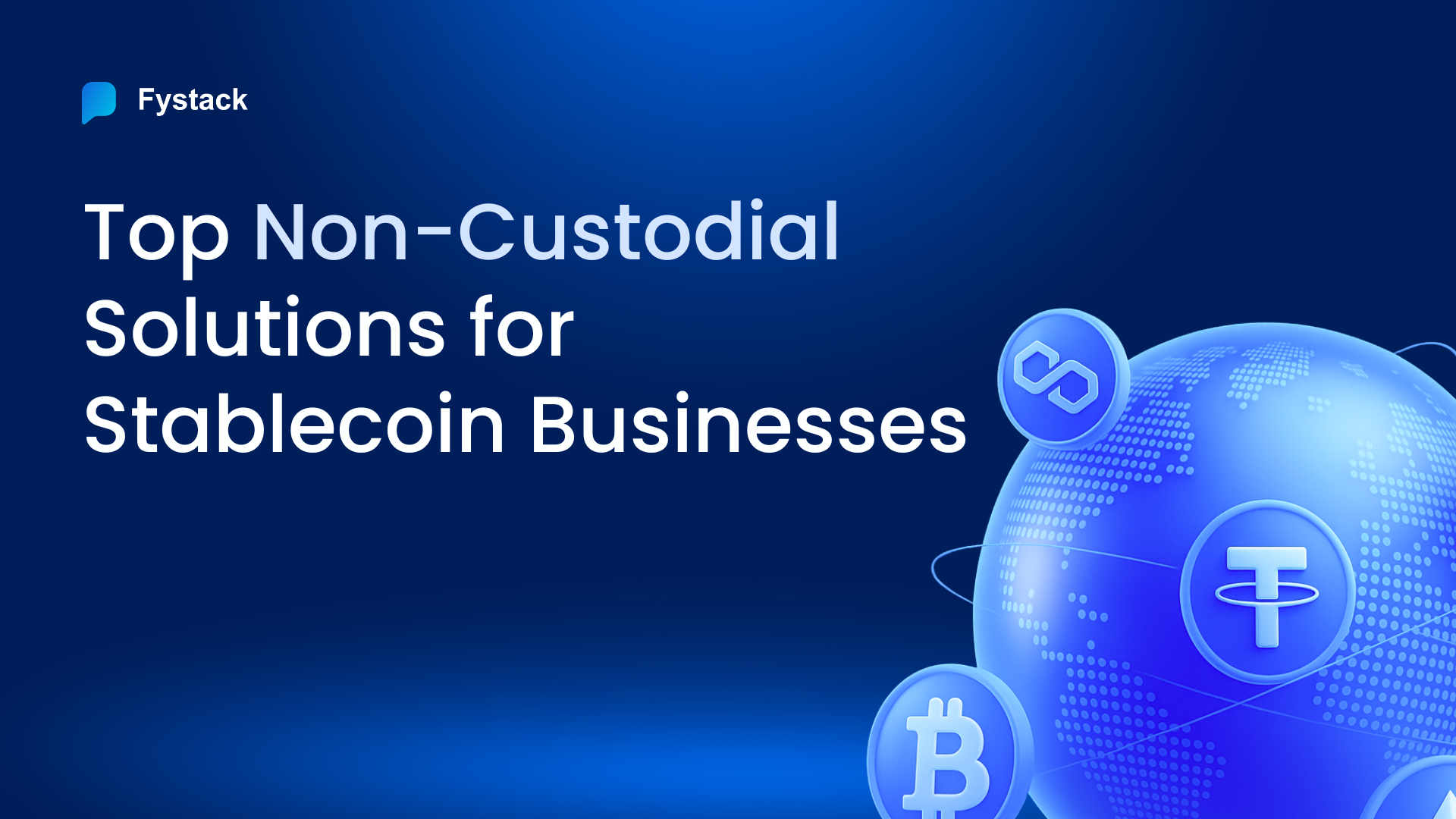
In a crypto world increasingly driven by decentralized systems and programmable logic, one paradox remains: while blockchain promises self-sovereignty, most organizations still rely on third parties to manage and safeguard their digital assets.
This gap exposes a deeper question, who truly controls those assets in practice?
Today’s Web3 infrastructure often lacks seamless connectivity with real-world business operations - compliance, payments, or treasury systems. To unlock blockchain’s full potential, businesses need an effortless way to integrate Web3 technologies into their existing workflows, enabling secure, compliant, and automated asset management without giving up control.
While blockchain is designed to be trustless, organizations still require a custody layer - an infrastructure that ensures digital assets remain secure, compliant, auditable, and properly governed within internal access policies.
In practice, most businesses expanding into DeFi, staking, or tokenized assets inevitably face three recurring questions:
- How can multiple team members approve transactions without exposing private keys?
- What’s the most affordable non-custodial platform for startups?
- And how can we stay compliant while remaining operationally agile?
The Rise of Non-Custodial Infrastructure
If you’re running a Web3 business or just starting to manage digital assets, the first question is often: “Should we self-custody our assets, or rely on third-party providers like Fireblocks, Copper or Bitgo,...?”
There’s no absolute answer - it depends on your organization’s stage and operational maturity. Custodial services are valuable in the early days when the team lacks in-house expertise, needs fast deployment, or faces strict regulatory requirements.
But at some point, every organization starts to ask:
“If our custodian goes down, do we still have full access to our assets?”
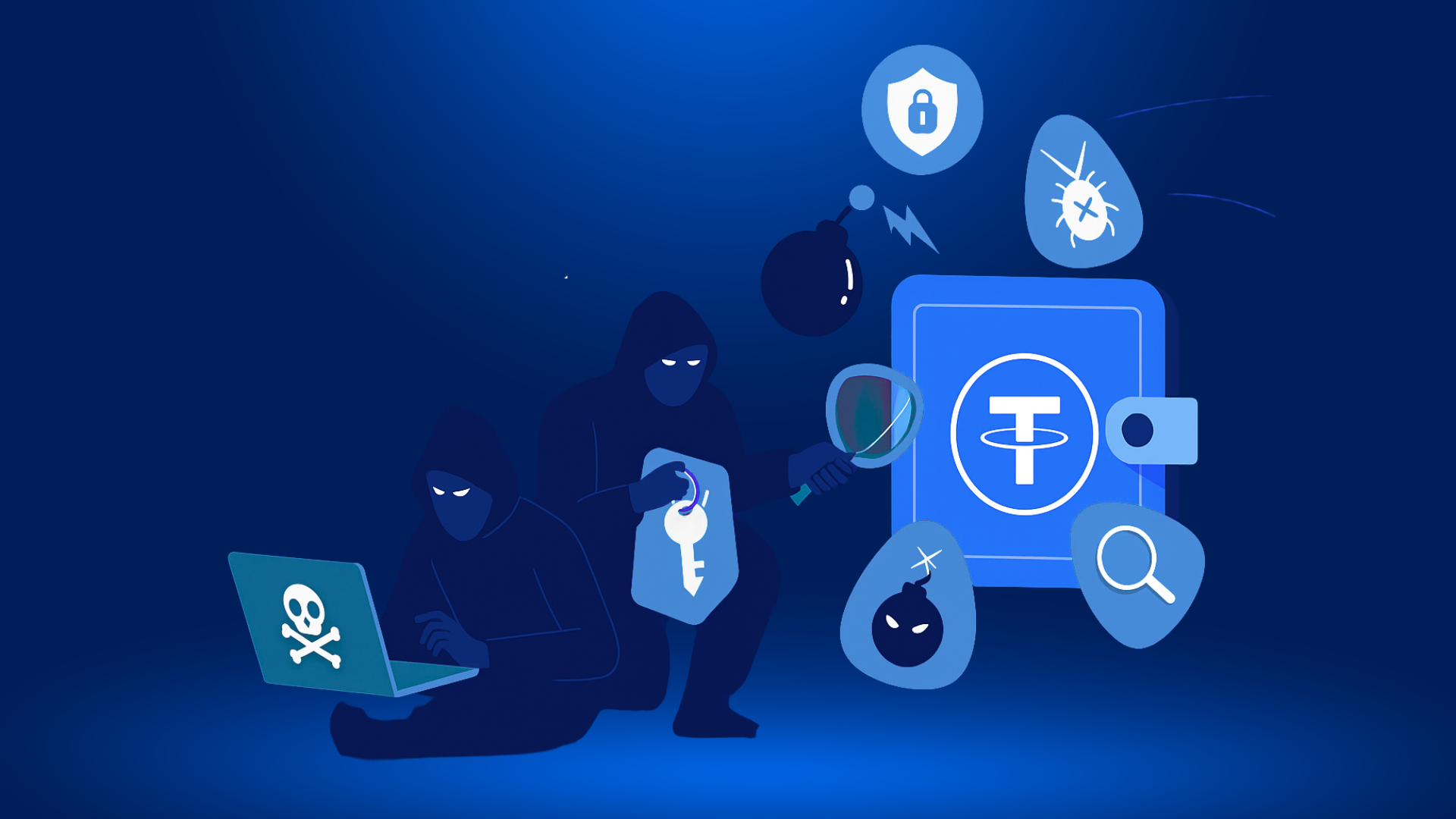
That question has driven many businesses toward non-custodial infrastructure - where they hold their own private keys and define internal security policies on their own terms.
Modern non-custodial solutions are far more accessible than they once were. Thanks to technologies like Multi-Party Computation (MPC) companies can now achieve enterprise-grade security without sacrificing the flexibility and user experience of custodial systems.
And why is this so urgent? Because real-world hacks in 2025 show that it's rarely the blockchain protocol at fault - it’s the operations, the governance, and the human processes. For example:
- The Bybit multisig cold wallet drain (~$1.5 billion) was caused by a supply chain attack on the UI of their wallet provider, allowing signers (including the CEO) to approve malicious transfers.
- A phishing/social-engineering campaign linked to UNC5142 compromised over 14,000 WordPress sites and injected malicious JS to drain wallets - showing again that human/trust failure is the entry.
- Smart contract bugs still cost hundreds of millions, a logic flaw in a shared library allowed the Cetus Protocol exploit (~$223 m) on the Sui chain.
The takeaway is clear: Security doesn’t come from self-custody alone - it comes from structured custody plus strong governance. For those managing stablecoin reserves or treasury operations, the questions become:
- Who is authorised to approve a withdrawal?
- What limits are in place on reserve movements?
- Is there an emergency pause or upgrade disaster-plan?
- Are key-shares distributed, rotated, and monitored?
- Are reserve audits transparent and on-chain?
This evolution isn’t just technical, it’s strategic. It represents a new era of ownership, transparency, and resilience in how Web3 organisations, fintechs, and stable-coin issuers manage digital assets and risk.
For a deeper look at how wallet security failures actually happen from MPC mis-configurations to governance blind spots, check out our latest analysis:
Top Crypto Hacks of 2025: How Hackers Target Your Digital Assets
And if you’re evaluating which wallet architecture best fits your Web3 startup - from embedded hardware wallets to enterprise-grade MPC - don’t miss our deep dive: Which Wallet Is Right for Your Web3 Startup?
Common Pain Points in Going Non-Custodial
Of course, taking full control of your own custody infrastructure doesn’t come without trade-offs. Many organizations that move away from custodial platforms quickly realize that the cost of complete control is often higher than expected.
- High service costs: Most non-custodial infrastructure providers still price their offerings for large funds or financial institutions, making them less accessible to smaller teams or startups.
- Slow integration: Setting up an MPC or multisig environment can take weeks, requiring deep technical understanding of key management and multi-party signing.
- Scaling complexity: Once you expand to multiple chains and develop more on-chain functionalities, maintaining your own custody layer quickly becomes a heavy operational burden.
That’s why choosing the right non-custodial provider matters from day one.
If you’re wondering how to choose the right non-custodial wallet provider for your business - one that aligns with your security, compliance, and scaling needs - here are a few key criteria financial institutions and investment firms often use when evaluating enterprise custody solutions:
- Key Ownership:
Does the provider allow full key control or transparent key-sharing? The less your infrastructure depends on external parties, the lower your vendor lock-in risk. - Policy & Role Management:
Does the system support granular permissions, approval workflows, and audit logs? This is critical for compliance and internal governance. - Multi-Chain Scalability:
Some providers only support EVM or Bitcoin chains, while modern businesses may need Sui, Solana, or Move-based ecosystems. The broader the coverage, the greater the flexibility. - Integration Speed & Developer Support:
No company wants to wait weeks to deploy a wallet. Strong SDKs and APIs are key to quick, testable integrations. - Cost of Ownership:
Don’t just look at licensing fees - factor in developer time, infrastructure costs, and long-term maintenance.
Top Non-Custodial Custody Providers for Businesses in 2025
In this rapidly evolving non-custodial landscape, Fystack is setting a new standard for enterprise custody - combining Fireblocks-level deployment speed with Safe-like transparency and control. At the same time, seasoned platforms like Safe, Fordefi, Qredo, and Cobo continue to refine their own custody models to meet a wider range of enterprise needs.
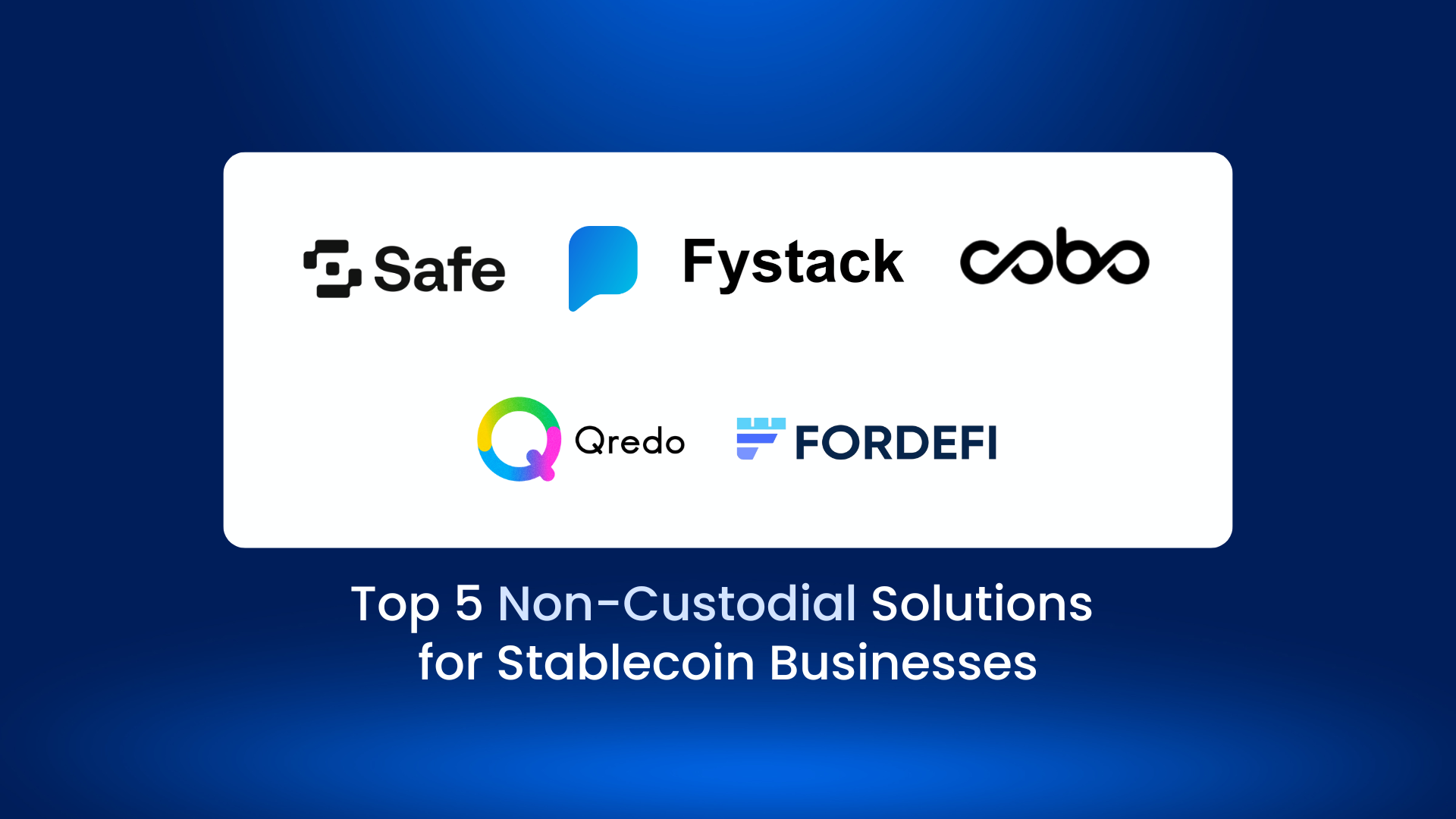
Fystack: Open-Source MPC Wallet Infrastructure for Modern Businesses
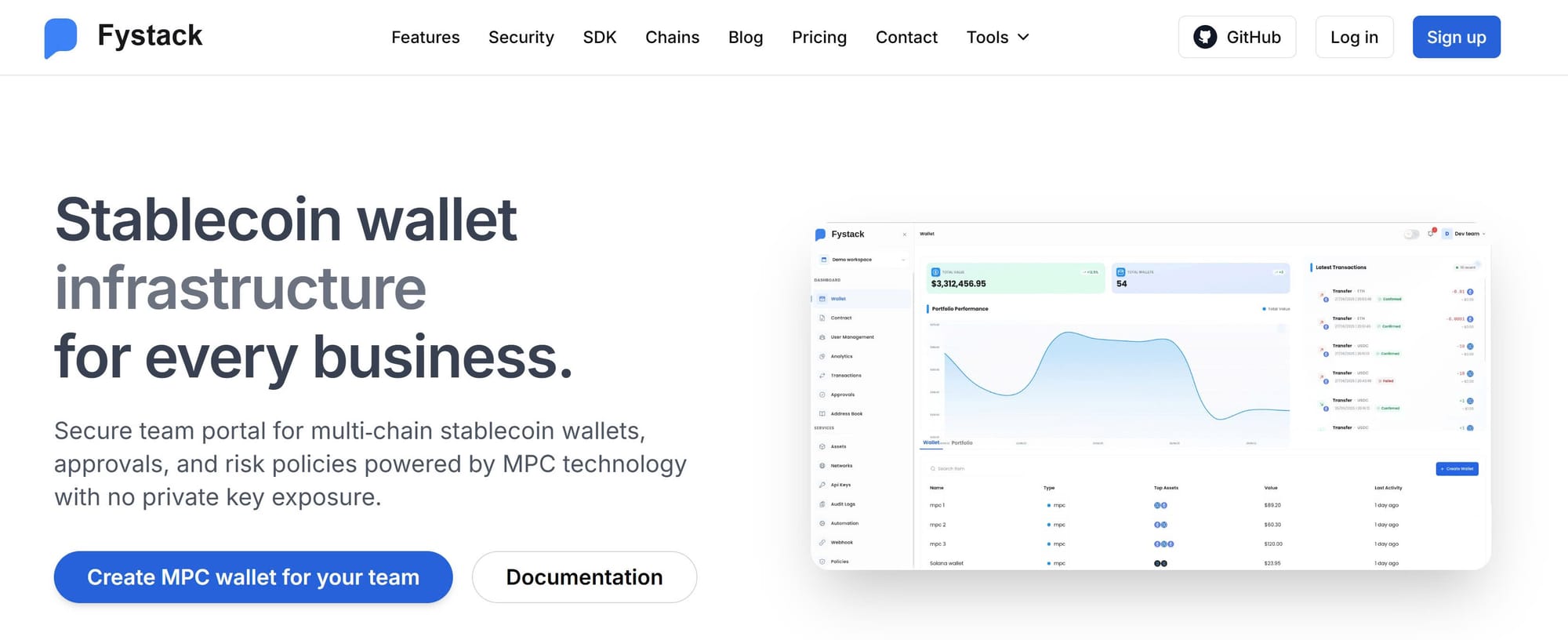
If Fireblocks or BitGo once led the custodial custody race, Fystack is taking a new direction - bringing non-custodial, self-hosted wallet infrastructure to small and medium-sized businesses.
Unlike most enterprise solutions that require private infrastructure or annual fees reaching tens of thousands of dollars, Fystack adopts an on-premise model with a one-time license, enabling businesses to deploy a stablecoin asset management platform powered by MPC technology privately and securely on the customer’s own infrastructure.
This model is essential for companies operating under strict regulatory environments, where compliance with local laws on privacy and digital asset protection is mandatory.
That simplicity and accessibility are what make many see Fystack as the most approachable MPC solution for businesses today.
- No vendor lock-in: If a third-party custodian suffers an outage or security breach, your operations remain unaffected - because you fully own and control your custody infrastructure powered by Fystack self-hosted custody solution. The AWS outage on October 20, 2025, proved that even tech giants like AWS can go down - causing cascading failures across Web3 services such as MetaMask, Coinbase, and the Base blockchain. Custodians like Fireblocks and BitGo are no exception.

- Run securely in a private network:
Most custodians expose public API endpoints, making them potential targets for hackers. With Fystack, you can self-host your entire custody platform within a private network, accessible only through a VPN or internal gateway. This setup eliminates public exposure, drastically reduces the attack surface, and makes unauthorized access virtually impossible. - Unlimited wallets, AUM, and transaction volume: Unlike most enterprise custodians that charge fees based on Assets Under Management (AUM) or transaction volume, Fystack offers truly scalable pricing, your costs remain predictable even as your user base and on-chain activity grow.
- Plug-and-play SDKs: Enable fast, multi-party (MPC) signing without relying on any external infrastructure.
- API-based access control: Manage signing rights and approvals by user roles - a feature often discussed in enterprise access policy design.
- Audit log & role management: Track every internal action, making audits and compliance effortless.
- Multi-chain ready: Supports EVM, Tron, Sui, Solana, Move-based chains, and over 100 tokens.
- Cost advantage: Up to 10x cost effective than Fireblocks or Fordefi, positioning Fystack as a leading choice in searches for affordable non-custodial infrastructure for startups.
(Read more: Self-Hosted MPC Infrastructure – Your Keys, Your Coins)
Safe (by Safe Global)
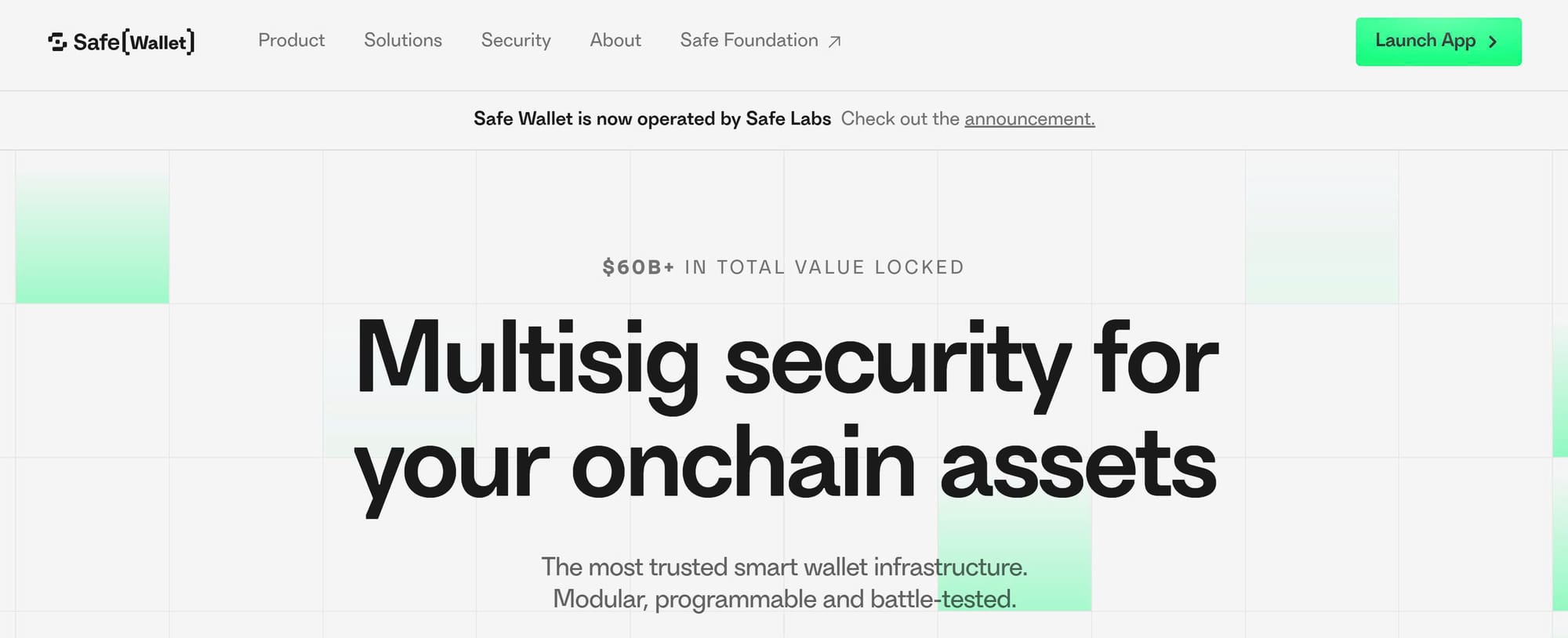
Safe remains the most established non-custodial multisig platform in the Ethereum ecosystem, continuing to dominate in DAO treasury management and enterprise-grade multisig wallets. As of Q1 2025, over 100,000 organizations and DAOs use Safe to secure more than $100 billion in assets.
- Smart contract multisig: Transparent and easily deployable across 15+ networks (Ethereum, Base, Arbitrum, and more).
- Rich ecosystem: The Safe {Wallet} module system supports NFT, DeFi, and treasury management integrations.
- Open-source & audited: Regularly reviewed by independent auditors, with cumulative transaction volume surpassing $1 trillion in 2025.
Safe is ideal for small teams and DAOs that need transparent multisig governance.
However, it lacks a flexible policy engine - features like automated signing conditions, role-based permissions, or multi-tier authentication that MPC-native platforms provide.
That’s precisely where Fystack steps in, combining MPC and policy-control layers to elevate enterprise asset management to a new level of security and automation.
(Read more: MPC vs. Multisig Wallets)
Fordefi: Institutional-Grade MPC for Crypto Businesses
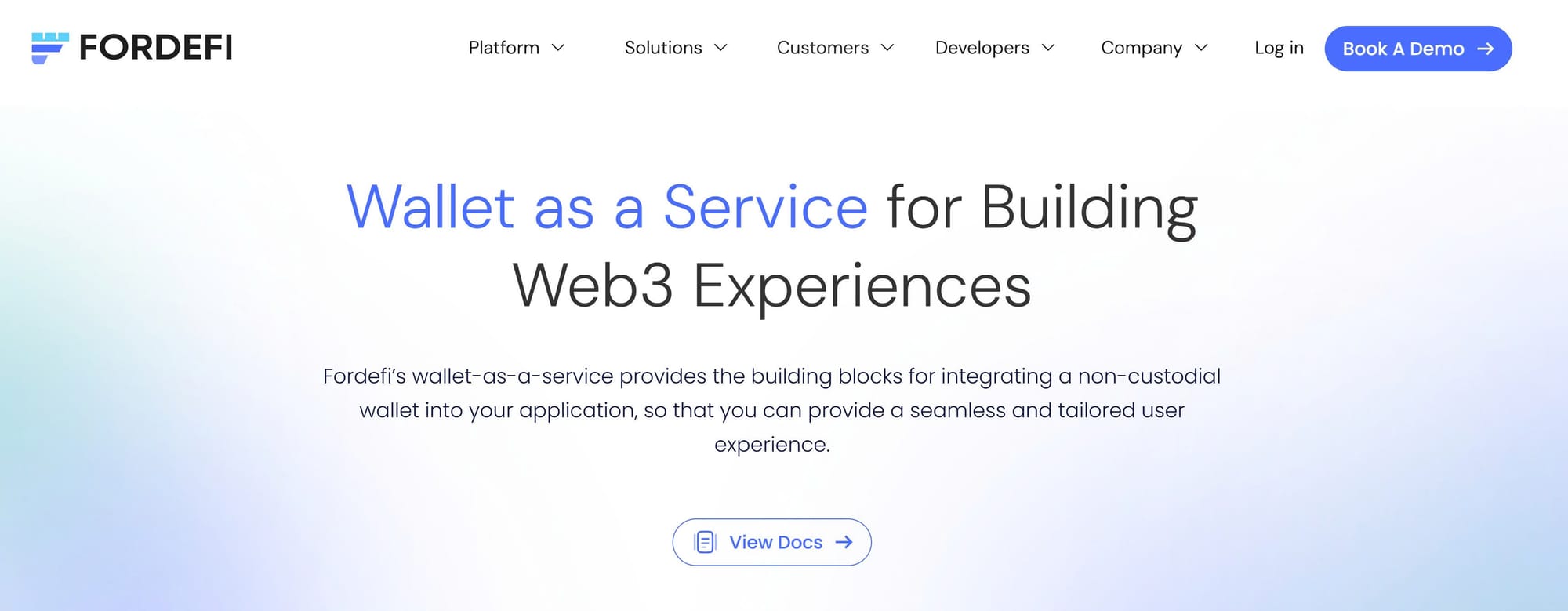
Fordefi remains a top choice for funds and professional trading institutions. Its 2025 update expands support to Bitcoin DeFi (sBTC on Stacks) and the Sui Network, while integrating with Binance, Coinbase, and OKX for centralized asset management.
MPC wallet & dashboard: User-friendly interface and flexible APIs for automated workflows.
DeFi connectivity: Connects to thousands of dApps, with transaction simulation and real-time risk alerts.
Compliance-first design: SOC2 and ISO27001 certified, with annual cryptographic audits.
That said, Fordefi still targets the institutional tier — resulting in higher costs and longer integration times. This has led many SMEs and startups to explore API-first alternatives like Fystack, which balance enterprise-grade security with operational efficiency.
Qredo: Decentralized Custody Network for Global Businesses

Qredo (now Open Custody Protocol) positions itself as a decentralized MPC network, where custody is operated by a distributed validator network rather than isolated wallets.
With its 2025 update, Qredo introduces cross-chain swaps and liquidity routing, making it a frequent mention in discussions around cross-border asset management using non-custodial networks.
- MPC Layer-2 custody: Faster settlement with reduced gas and counterparty risks.
- Cross-organization access control: Ideal for multinational organizations that require multi-layered permission structures.
- Yield & liquidity features: Supports EVM assets and secure ERC-20/721 yield farming.
Cobo MPC Wallet: Trusted in Asia
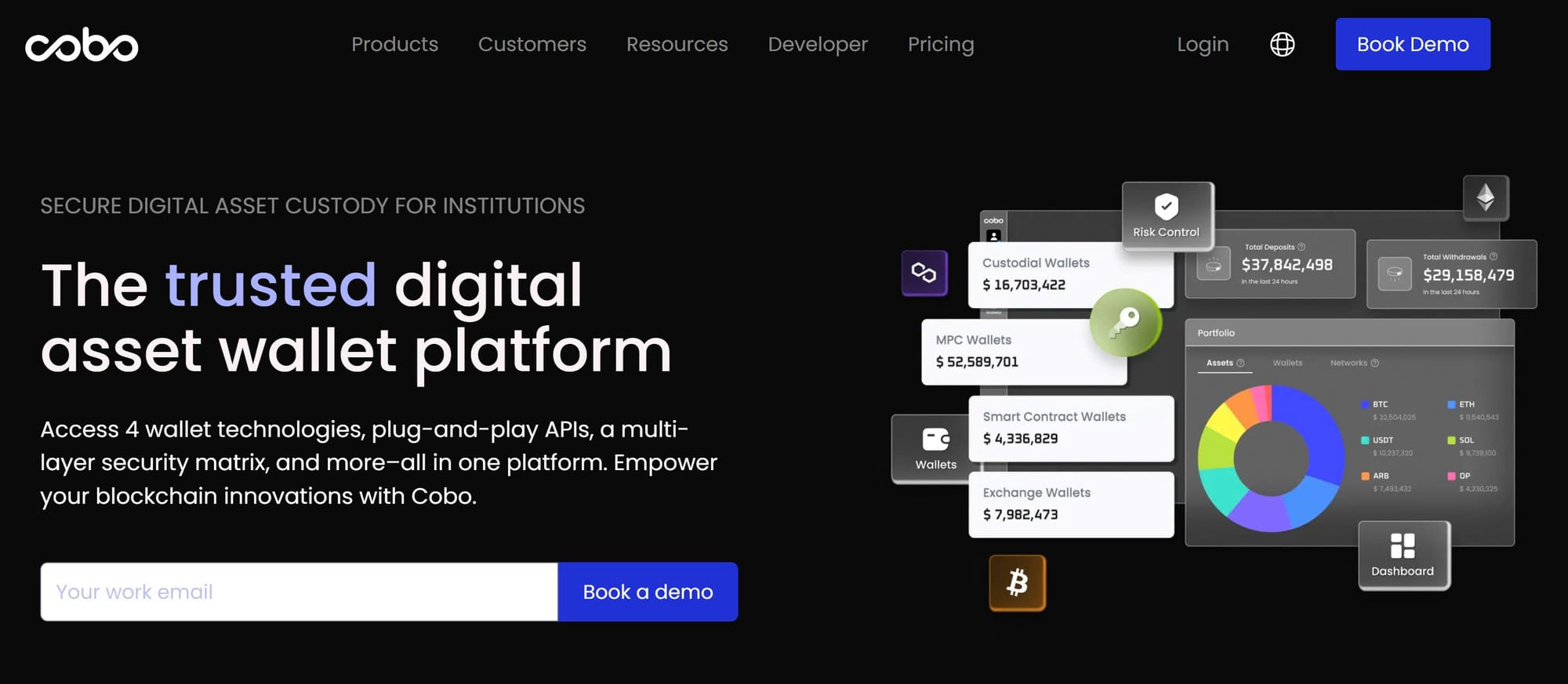
Cobo continues to be a trusted brand in Asia, serving over 500 institutions and securing billions in digital assets. Its 2025 focus revolves around compliance and DeFi automation, backed by ISO27001 certification and Chainlink integration for executing policy-based strategies - a standout feature in searches for secure MPC wallets for Asian organizations.
- Policy engine: Flexible configuration for multi-signature and approval flows (2-of-3, 3-of-5, etc.).
- Multi-chain & WaaS: Supports hundreds of chains and tokens, offering white-label wallet-as-a-service.
- Security-first architecture: Zero-trust design, key recovery, and integrations with Alibaba Cloud and Antalpha.
Cobo is particularly suited for Asian organizations seeking a stable, locally supported, and cost-effective custody solution - though it remains closer to a traditional enterprise model than an API-first approach.
Conclusion
Each model serves a distinct market segment, yet the industry’s trajectory is converging toward policy-based automation - where organizations maintain control while minimizing human dependency and operational risk.
That’s precisely the direction infrastructure providers like Fystack are heading: helping businesses deploy secure, scalable, and flexible non-custodial custody within days. In the end, non-custodial isn’t just a new way to store assets - it’s how modern organizations operate in the digital era.

